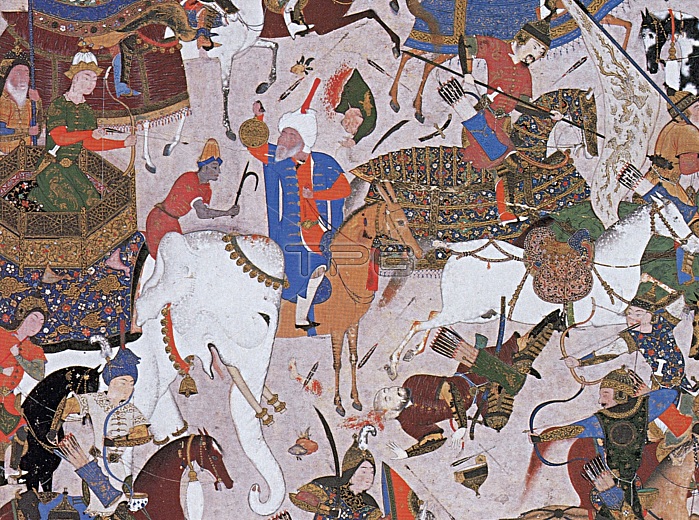
Detail from unidentified Persian miniature. Astronomer stops to take a reading on his astrolabe during battle. During the Middle Ages, astronomy was mostly stagnant in medieval Europe, at least until the 13th century. However, astronomy flourished in the Islamic world and other parts of the world. This led to the emergence of the first astronomical observatories in the Muslim world by the early 9th century. In 964, the Andromeda Galaxy, the largest galaxy in the Local Group, containing the Milky Way, was discovered by the Persian astronomer Azophi and first described in his Book of Fixed Stars. The SN 1006 supernova, the brightest apparent magnitude stellar event in recorded history, was observed by the Egyptian Arabic astronomer Ali ibn Ridwan and the Chinese astronomers in 1006. Some of the prominent Islamic (mostly Persian and Arab) astronomers who made significant contributions to the science include Al-Battani, Thebit, Azophi, Albumasar, Biruni, Arzachel, Al-Birjandi, and the astronomers of the Maragheh and Samarkand observatories. Astronomers during that time introduced many Arabic names now used for individual stars.
| px | px | dpi | = | cm | x | cm | = | MB |
Details
Creative#:
TOP22161133
Source:
達志影像
Authorization Type:
RM
Release Information:
須由TPG 完整授權
Model Release:
N/A
Property Release:
No
Right to Privacy:
No
Same folder images:

 Loading
Loading